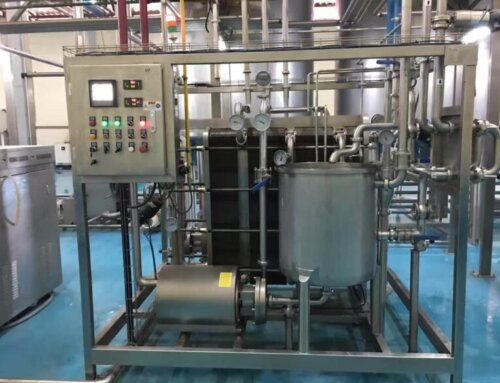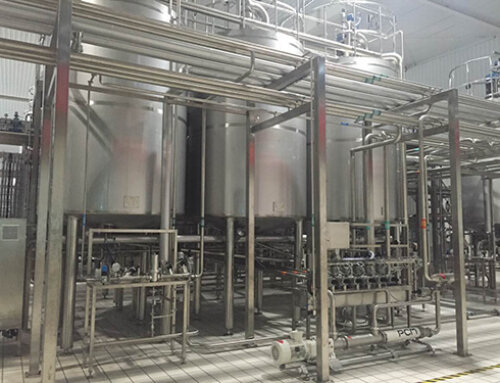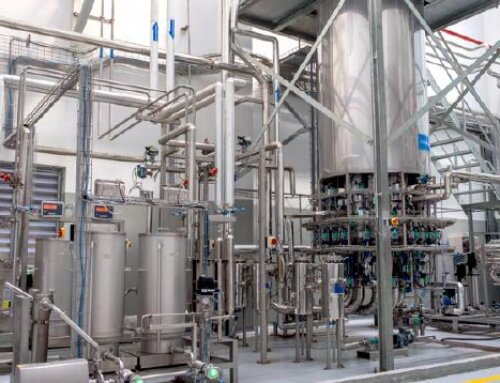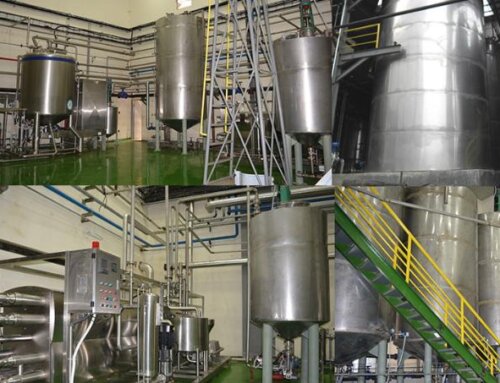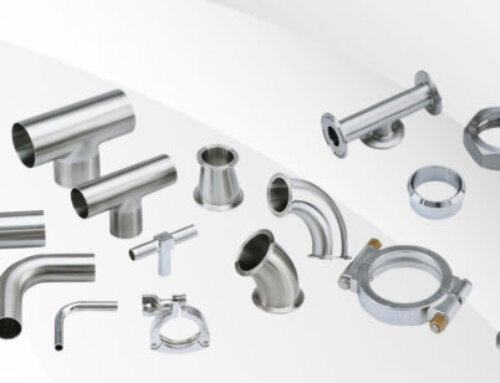Peach Juice Processing Line Description
- Peaches are rich in fructose, glucose, dietary fiber, volatile oil, protein, carotene, organic acids, vitamin C, calcium, magnesium, potassium, iron and other nutrients. Peach is a fruit with high potassium and low sodium. It can balance potassium and sodium in the body, maintain electrolyte stability, and play a role in diuresis and edema. Peaches are rich in iron, which can nourish blood and prevent iron deficiency anemia. It is rich in pectin and dietary fiber, which can increase satiety, promote gastrointestinal motility, increase appetite, and promote digestion. Regular consumption of peaches can also prevent constipation and lose weight.
- Peach juice processing technological flowchart is fresh peaches washing and sorting machine, then removing the core of the peaches by hand or machine, after that, crush the peaches into 3-5mm peach flesh, then use the pulping machine to beat the peach into 0.6mm pulp. The peach pulp, water, acid, sugar and other flavorings will be mixed to make into the peach juice, then the peach juice will be pasteurized, homogenized and filled into small containers for consumption.
- The peach juice can be filled into metal cans, PET bottles, glass bottles, tetra pak cartons or pouches and the capacity for processing peach juice is from 500LPH-10000LPH.
- The peach juice yield rate is about 65%-70% according to the variety and mature degree, and the machine for the peach juice process is made of food-grade SUS304 material.
- The peach juice processing technology is a technology verified by our company’s R&D department. It has high production efficiency and low failure rate, which can produce premium quality peach juice. It is the first choice for small and medium-sized juice processing plants.
- We also offer machines for processing other stone fruits into juice or puree like apricot, plum, cherry, etc.

Peach Juice Processing Line Main Process Introduction
Raw material selection
Choose peaches with strong fragrance, soft flesh and high pectin content. It is better to choose yellow peach varieties with thick flesh, small fruit stones, rich juice, less crude fiber, strong flavor and moderate acidity. Remove unqualified fruits, immature fruits, and poorly colored fruits.

Peach cleaning and washing machine
First, thoroughly clean the surface dirt with clean water, and scrub the surface of the peach with a brush to remove hairs. When there is a lot of residual pesticides, you need to rinse with 1% salt water, and then rinse with clean water.

Peach Cut in half and pitting
Cut it in half with a stainless steel fruit knife or cut it in half with a halving machine, then use a digger to remove the pit, and at the same time trim and remove the damaged spots on the peach pulp. After cutting in half and removing the pit, put the pulp in 0.1% ascorbic acid and citric acid mixture solution, preventing discoloration of the peach pulp.
Peach crushing, softening, beating
The peach pieces should be crushed first, with a size of 3-5mm. The crushed pieces are heated in 90-95℃ hot water for 2-5min to soften, and then be beaten by a beater with a 0.5mm aperture to remove the peel and coarse fiber.
Peach juice blending and formulation
After mixing the peach pulp with water in a ratio of 4:3, filter it with a centrifuge or filter, then add sugar, citric acid, flavorings and ascorbic acid, mix well and make the peach juice pulp content above 40%. The soluble solid content of the product is not less than 12%, the acidity is not less than 0.35%, the vitamin C is not less than 25mg/100g, and the water for ingredients is RO filtered pure water.
Peach juice degassing and homogenizing
The mixed peach pulp juice is deoxygenated in a vacuum machine with a vacuum degree of 60-80 kPa, and then processed with a high-pressure homogenizer at a homogenization pressure of about 15Mpa. Homogenization can improve the appearance of the juice, make it brighter in color, stronger in fragrance, more mellow in taste, and reduce the layering of the juice.
Peach juice pasteurization and filling machine
The peach juice is heated to above 95°C through a plate or tube pasteurizer and maintained for 30-60S, and then cooled to 85°C for filling. After filling, the container needs to be sealed quickly to prevent too much air from entering and reduce the quality of the juice. The filling container can be a bottle, a metal can or a carton, and when the metal can or bottle is filled, the container needs to be pre-cleaned and disinfected.
Peach juice secondary pasteurizing and cooling machine
For bottled or canned peach juice beverages, after sealing, they need to enter the pasteurization cooling equipment for secondary pasteurization, and then cool to room temperature. The pasteurization temperature is 90-95°C for 15 minutes. Then use cooling water to cool the juice to room temperature and pack it into cartons.
